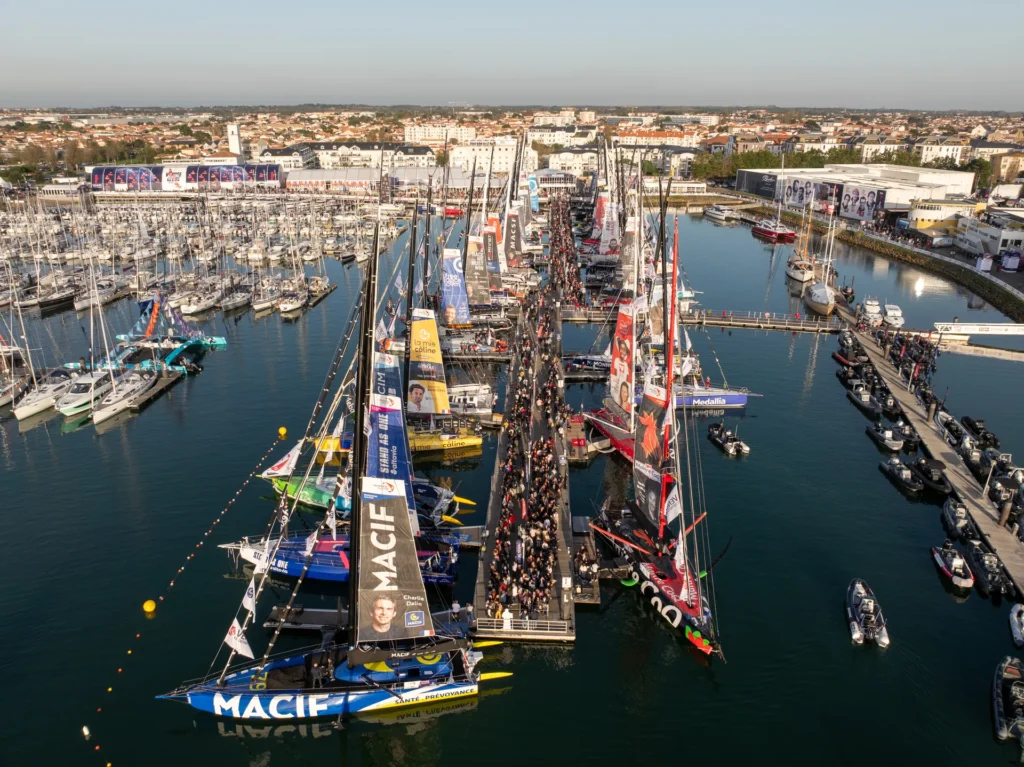Vendée Globe
The Swiss sailor was a keen observer of the last Vendée Globe. Assessment and outlook.
The Vendée Globe has more and more forbidden zones: the ice limit, sea rails and cetacean breeding grounds. What do you think of the course? The organizers don’t really have a choice when it comes to safety. In the south, the strategy is extremely constrained by the ice limit. No one would forgive them if a competitor collided with a growler. Strategically, competitors can choose to position themselves ahead of the lows, like Sébastien Simon and Charlie Dalin’s breakaway, or take a more cautious route north, but they don’t have many options.
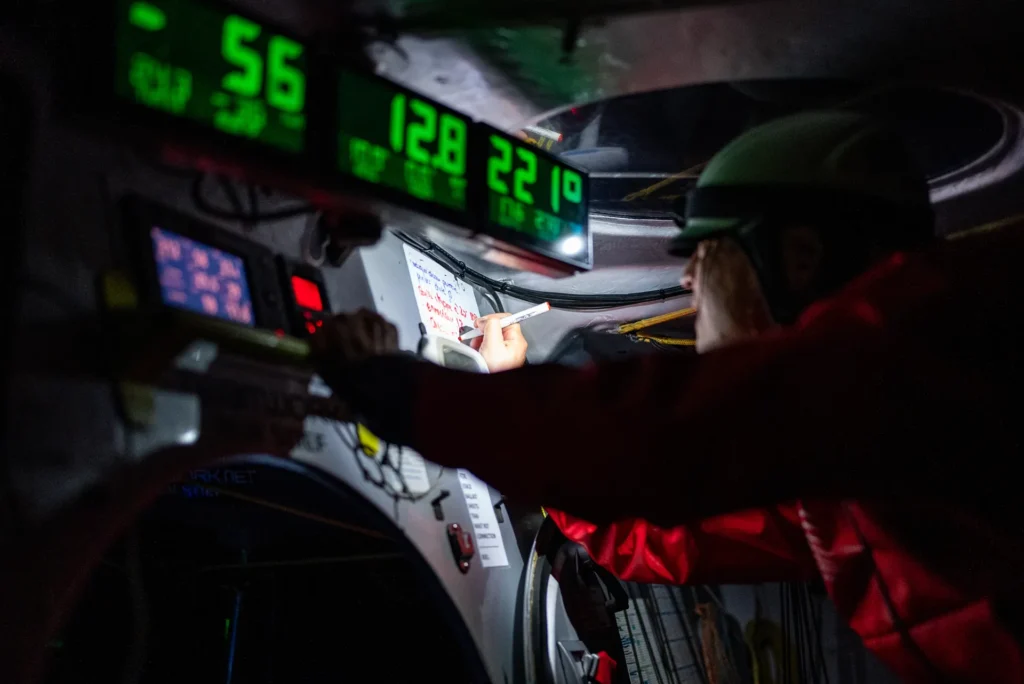
ROUTING SOFTWARE IS KEY.” JUSTINE
METTRAUX AT WORK. ©Gauthier Lebec
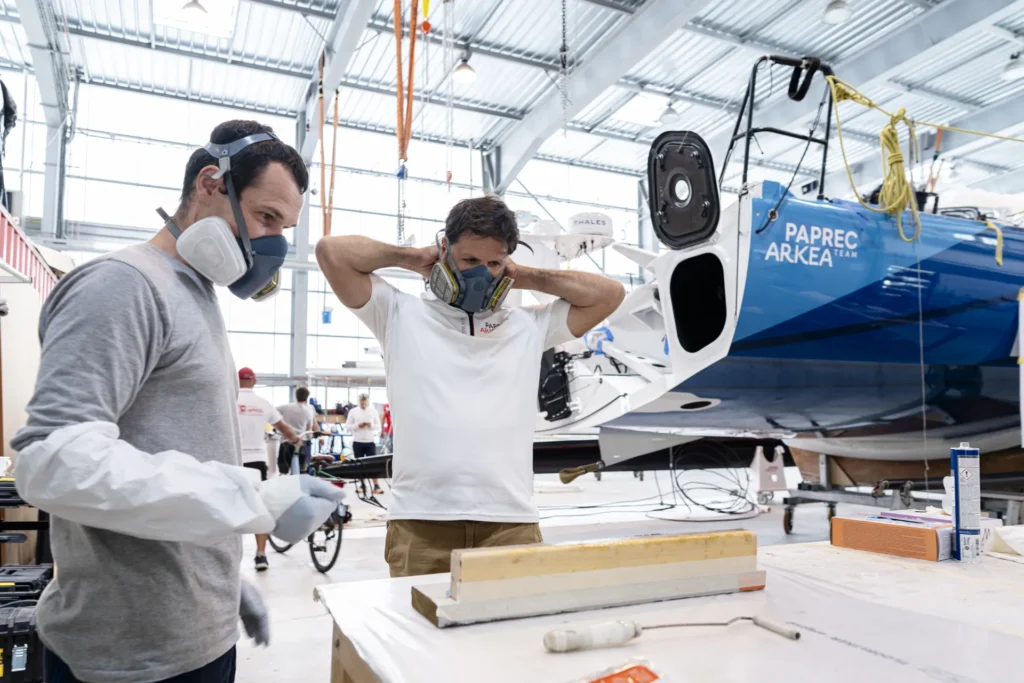
The ice limit pushes the fleet northwards, a little further with each edition. This gradually lengthens the course….
Yes, but as the boats are going faster and faster, it’s not a problem. What’s a pity, however, is that the tactical options are becoming fewer and fewer. In the south, it’s becoming a race of pure speed.
In the end, the real tactical zone is the Atlantic? On the outward journey, the leaders clearly escaped between Brazil and South Africa, bypassing the St. Helena High. On the return journey, part of the fleet knitted together along the coasts of Argentina and Brazil. In the Atlantic, choices are sometimes equally constrained, as in the case of the Azores. There, to avoid the huge cetacean breeding zone, you have to choose “east” or “west”, and queue up. With each edition, there are fewer and fewer options.
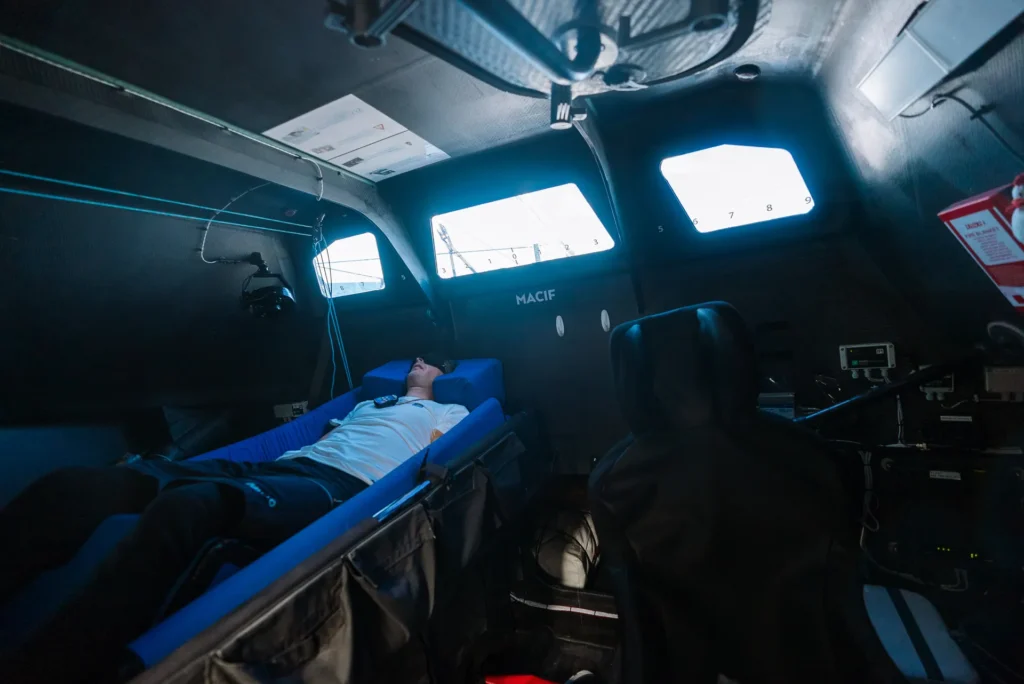
HIS BOAT FROM THE COMFORT OF HIS BANQUETTE
UNDER HIS CAP. ©Guillaume Gatefait
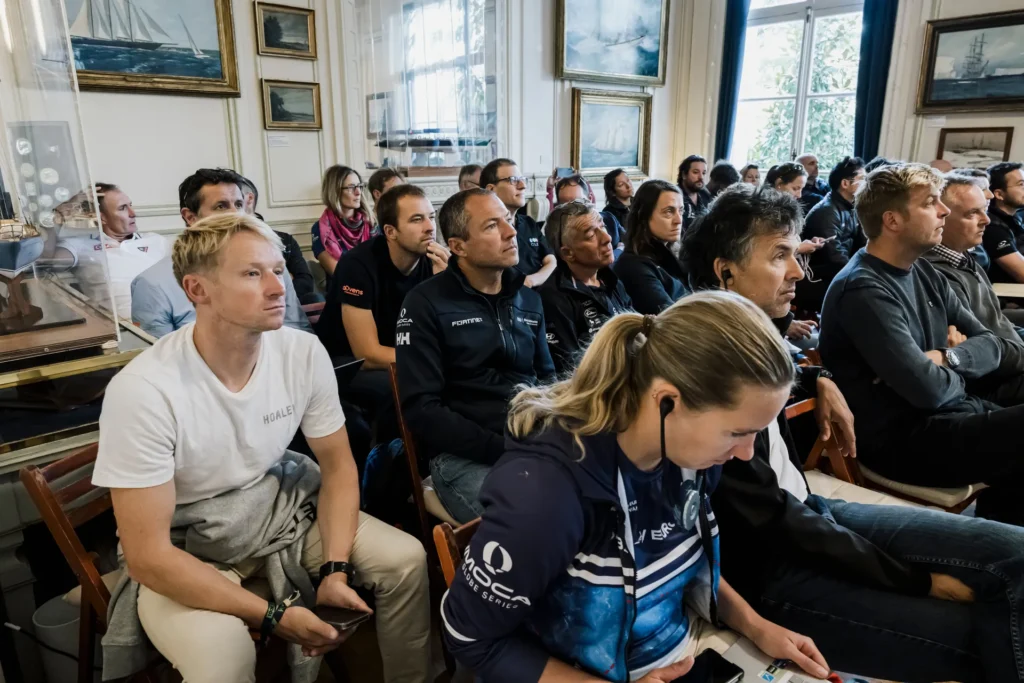
FOR THE SKIPPERS. ©Olivier Blanchet
“The Vendée Globe has become a path of suffering.”
Does the fact that foilers have different angles to daggerboard boats affect race strategy? With a more open angle to the wind, the foilers’ course corresponds to that of the multihulls. In theory, this should open up tactical possibilities, but the constraints have become so great and the weather information tools so powerful that this isn’t really the case. We can see that Jean Le Cam, with his daggerboard boat, has sailed far fewer miles than the foilers. Once again, it’s speed that makes the difference. The architectural choices of foils and hulls generate differences according to wind conditions. We saw that Yoann Richomme was faster in the breeze and that Charlie Dalin was more at ease in the medium.
What do you think of the evolution of boats? Since 2024, the reliability of the boats has been impressive. The foilers have increased their power by a third. Between the first-generation foilers and today’s designs, power has increased by a further 15-20%. With the exception of Pip Hare’s accident off Australia and that of Arnaud Boissières in Cape Verde, one-design masts have held up relatively well. This may be due to the fact that alarms are now installed on the shrouds to prevent overloading of the rigging. The work done by the preparation teams to improve reliability is to be commended.
Whereas previous editions saw an average of 40% retirements, this time we’re averaging less than 20%… In terms of equipment, there were only a few broken foils this year. In the past, foils would break in the event of an impact. Now they’re holding up better. Nowadays, you have to hit it at very high speed or in a very big thing for it to break. The ban on sailing in breeding areas also prevents bad encounters. I also note that out of the 40 competitors in this edition, there are 15 rookies. That’s a good number, which I’m delighted about. But in human terms, the organization has done a good job in forcing the boats to sail a lot in 2023 and 2024. As a result, the skippers in the IMOCA class have become more reliable.
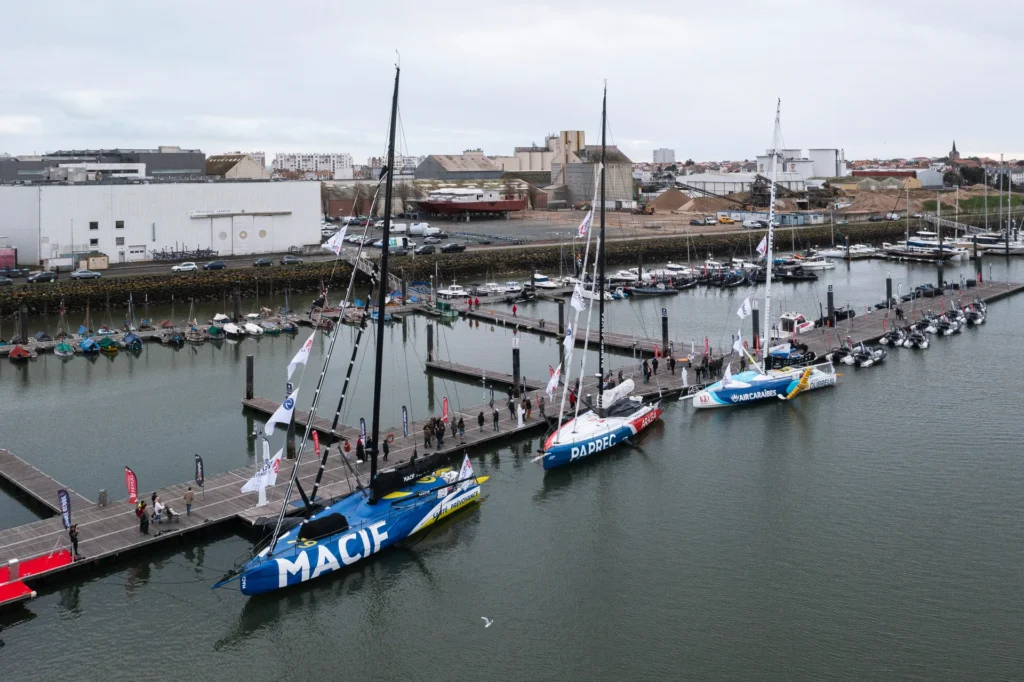
AT THE VENDÉE GLOBE PONTOON, JANUARY 23, 2025 IN LES SABLES-D’OLONNE. ©Olivier Blanchet
What do you think of the hecatomb of sails and hooks in this edition? Indeed, this edition revealed a longevity problem with Karver hooks and North Sails mainsails. They are reliable for transatlantic races, but don’t last the distance on a round-the-world race. This is all the more annoying given that it’s probably a question of undersizing, since these manufacturers offer a whole range of possible resistances.
Ergonomics will also be a spectacular new feature in 2025. The best example is Charlie Dalin’s boat. The winner was able to control his boat from his bunk, comfortably seated under his cap. In my opinion, visibility, comfort and access to the controls is one of the secrets of Dalin’s victory. I don’t understand why some people still have to go down into the cabin to sleep.
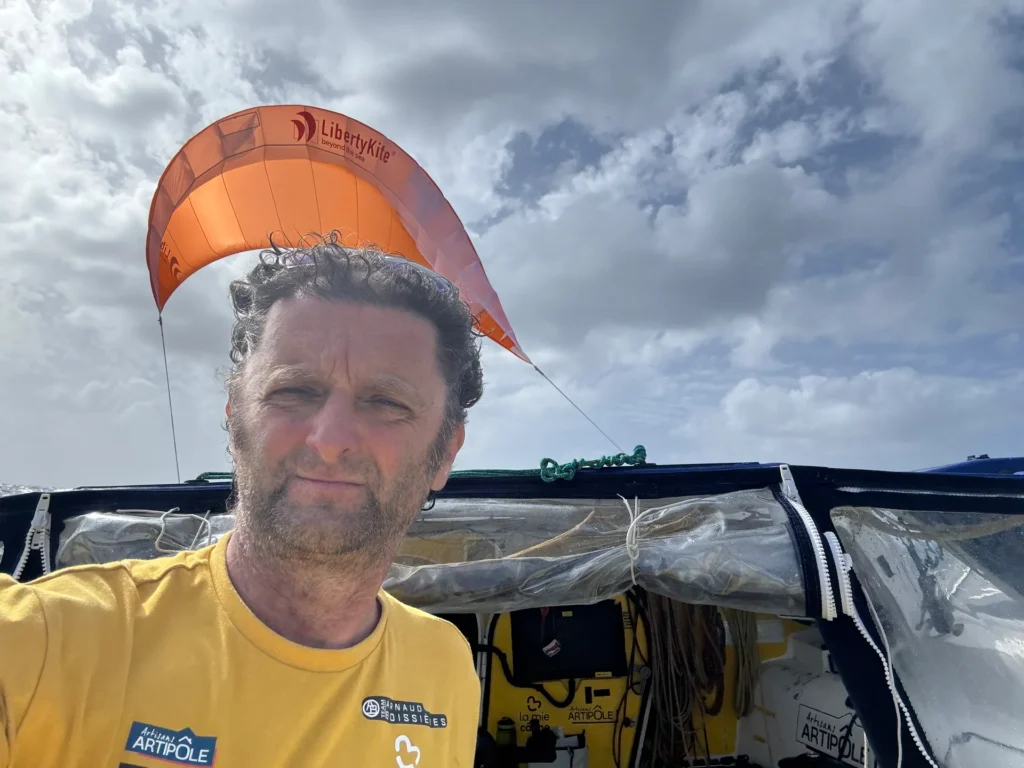
THAT OF ARNAUD BOISSIÈRES (LA MIE CÂLINE) IN CAPE VERDE, THE ONE-DESIGN MASTS
HELD UP RELATIVELY WELL. ©Arnaud Boissières
Have foilers become too violent for the body? There are four pleasures at sea: the pleasure of steering, the visual pleasure of enjoying the environment, the pleasure of speed and the pleasure of accomplishment. The pleasure of steering has disappeared with the advent of high-quality pilots, and caps are gradually distancing sailors from visual pleasure. The pleasure of speed is increasingly spoiled by the violence of impact. The faster you go, the more you suffer. And that’s a real change. The pleasure of accomplishment has become a path of suffering on IMOCA boats. You could feel it in the communications with the skippers who, apart from a few little slices of life, shared few pleasures during this round-the-world trip.
So there’s still time to rethink boat safety and ergonomics? Most of them are already working on comfort and safety: protections and foams are installed. Skippers protect themselves with helmets and attach themselves to their bunks. Nevertheless, the race has seen a lot of injuries: torticollis, sprains, bruises. Nothing serious, but lots of little knocks all over the place. The Vendée fleet escaped the worst, when you know that a buffet stop is equivalent to a 5-meter fall. If the arrival of foils in this class has improved the race record by 10 days, it has also added a lot of violence for the skippers.
Not to mention the budget issue… Indeed, foils imply a budgetary addition of several million euros. For a new boat, a pair of foils costs 500,000 euros to build. With ad hoc studies, that rises to a million euros. If you build two per campaign and break one during the race, you’re looking at a figure of between 1.5 and 2 million euros. This gives an overall budget for a new IMOCA of between 5 and 10 million euros. There’s quite an extra cost associated with foils.
Charlie Dalin has suggested that he works on his weather forecast seven hours a day. Should this become the norm for skippers? Today, if you want to win, knowledge of routing software is key. You need an engineer’s head and the ability to swallow data to stay in the top ten. There’s a reason why the top two finishers are naval architects. It’s obviously a bit tough for Justine Mettraux. She says so herself. If she’s excellent on deck, she’s less gifted in DIY and weather forecasting. It’s no longer enough to sleep less and withstand the cold better than her rivals. That era is over. On the contrary, those who came out on top were in better shape than their pursuers, with a clear mind.
What about the massive presence of Figaro racers in the top ten? The Figaro is all about weather, strategy and tactics. It’s also about learning to manage fatigue and endurance. It’s not enough to completely master an IMOCA, since you don’t need a lot of technical skills, but it’s an excellent school for the Vendée Globe.
What would you change about the organization of the Vendée Globe? There’s a kind of favoritism towards new boats that really annoys me. This policy favors big budgets and new boats, and does nothing for the environment. On the contrary, I think that a boat that has already sailed around the world is more reliable. If it were up to me, I’d be harder on the selection of new boats than on old ones.
Should there be two classifications? One for foilers and one for daggerboards? At the start of the Route du Rhum, there was only one ranking. Today, there are half a dozen. Without wishing the same thing for the Vendée Globe, it seems to me that two classifications are possible. This would allow a better integration of older boats, newcomers and small budgets.
Should we keep 40 competitors? I don’t know exactly what the organizers’ constraints are, particularly in terms of berths and safety. In the end, for this edition, there were 41 applicants for 40 teams entered. So there wasn’t really any selection on the part of the organizers. I’m inclined to think that the number of teams will remain the same in the future.
A round-the-world multihull race against the prevailing winds
The other way around, single-handed and multihull. This is the challenge set by Yvan Bourgnon for 2026. The reference time was set in 2004 by Jean-Luc Van Den Heede on the enormous Adrien, a 26-meter aluminum monohull (122 days, 14 hours, 3 minutes and 49 seconds). But Yvan Bourgnon prefers to talk about “the multihull record”. It is on the official course, Ouessant-Cape Lizard and return, that the Swiss sailor wishes to set out, single-handed and in a multihull. He is considering Francis Joyon’s former Idec Sport, currently in the hands of Alexia Barrier, for a Jules Verne Trophy attempt in 2025. “The boat is ideal for this type of challenge. It will be available from April 2026, for 5 million euros.” Bourgnon has already raised “a third of the budget”. He is now fine-tuning his project. “Most of the circumnavigation can be done in fairly mild latitudes, so as to avoid head-on depressions and take advantage of the trade winds. After the descent of the Atlantic, we’ll have to skim Patagonia, Australia and South Africa before heading back up into the North Atlantic. The main difficulty of the course remains Cape Horn, with its very southerly descent and lows to contend with every two days. At this stage, two multihull attempts have failed. In 2017, Yves Le Blevec’s attempt on the Ultim Actual ended with the Chilean navy airlifting him from the water. In 2020, Romain Pilliard and Alex Pella ran aground in Cook Bay.
Info and contact: yvan-bourgnon.fr


